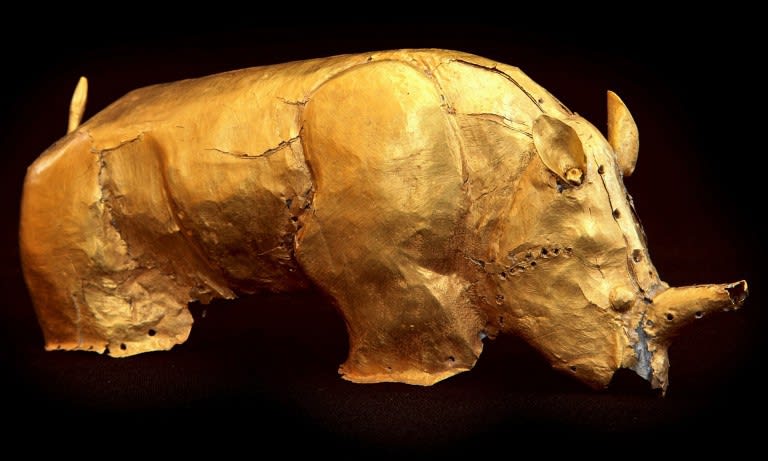
The above golden rhino is the best known remnant of the Kingdom of Mapungubwe, the first major urban centre in southern African history, which went into decline around the 1300s. Since the end of apartheid regime in 1994, the stunning object — just 15 cm long and more than 700 years old — has become a defining symbol of precolonial civilization in South Africa. Originally nailed on to a wooden carving, nothing is known about its function – but it is clearly the product of great workmanship.
Described as southern Africa’s equivalent of Tutankhamun’s mask, the golden foil rhino could be displayed overseas for the first time in the British Museum at an exhibition of South African art late 2016. ‘Could’, since the South Afrian government already rejected a proposal for the rhino to be displayed in Paris in 2001. You can read all about the new request here. It would make a dramatic world debut for the rhino, which is currently on display in a little-known gallery at the University of Pretoria (which holds about 9 kg of gold treasures from the Mapungubwe). To date, the South African government has declined to say whether the object will feature as a star exhibit at the London show – although its absence obviously would be a great shame in an exhibition on the history of South African art.
Learn more about the discovery of the site here.
The site was rediscovered in December, 1932, by five white adventurers who had heard rumours of a great treasure. They persuaded the reluctant and frightened locals to show them a secret stairway to the top of Mapungubwe’s steep sandstone cliffs. Even 700 years after the kingdom’s disappearance, the local residents revered the hill so much that they would not gaze directly at it. But the treasure hunters quickly climbed up and dug out the gold artifacts. At first, they decided to split their loot, including the fabulous rhino. But one of the five – a young guilt-riddled university student – had a change of heart. He sent some of the fragments to a University of Pretoria professor, and the hill was soon purchased for archeological research.
